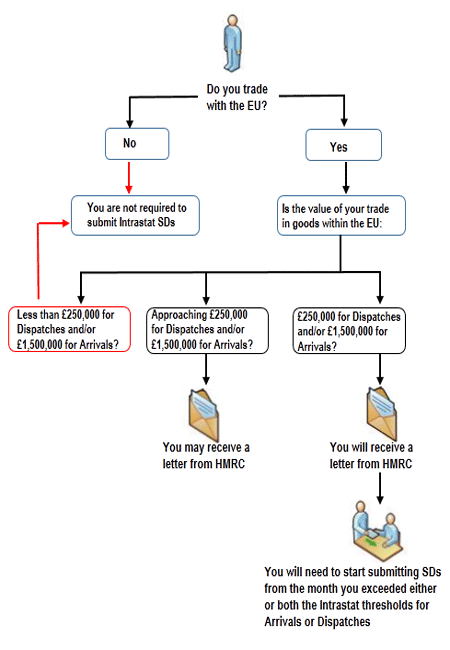 There are a number of VAT Schemes which are designed to simplify accounting for the tax. They may save a business money, reduce complexity, avoid the need for certain documentation and reduce the time needed to deal with VAT. Some schemes may be used in combination with others, although I recommend that checks should be made first.
There are a number of VAT Schemes which are designed to simplify accounting for the tax. They may save a business money, reduce complexity, avoid the need for certain documentation and reduce the time needed to deal with VAT. Some schemes may be used in combination with others, although I recommend that checks should be made first.
It is important to compare the use of each scheme to standard VAT accounting to establish whether a business will benefit. Some schemes are compulsory and there are particular pitfalls for certain businesses using certain schemes.
I thought that it would be useful to consider the schemes all in one place and look at their features and pros and cons.
These schemes reviewed here are:
- Cash Accounting Scheme
- Annual Accounting Scheme
- Flat Rate Scheme
- Margin schemes for second-hand goods
- Global Accounting
- VAT schemes for retailers
- Tour Operators’ Margin Scheme
Cash Accounting Scheme
Normally, VAT returns are based on the tax point (usually the VAT invoice date) for sales and purchases. This may mean a business having to pay HMRC the VAT due on sales that its customers have not yet paid for.
The VAT cash accounting scheme instead bases reporting on payment dates, both for purchases and sales. A business will need to ensure its records include payment dates.
A business is only eligible for the Cash Accounting Scheme if its estimated taxable turnover is no more than £1.35m, and can then remain in the scheme as long as it remains below £1.6m.
Advantages
- Usually beneficial for cash flow especially if its customers are slow paying
- Output tax is not payable at all if a business has a bad debt
Disadvantages
- Is generally not beneficial for a repayment business (one which reclaims more VAT than it pays, eg; an exporter or supplier of zero rated goods or services)
- Not usually beneficial if a business purchases significant amounts of goods or services on credit
Annual Accounting Scheme
The Annual Accounting Scheme allows a business to pay VAT on account, in either nine monthly or three quarterly payments. These instalments are based on VAT paid in the previous year. It is then required to complete a single, annual VAT return which is used to calculate any balance owed by the business or due from HMRC.
A business is eligible for the scheme if its estimated taxable turnover is no more than £1.35m and is permitted to remain in the scheme as long as it remains below £1.6m.
Advantages
- Reduces paperwork as only the need to complete one return instead of four (Although it does not remove the requirement to keep all the normal VAT records and accounts)
- Improves management of cash flow
Disadvantages
- Not suitable for repayment businesses as they would only receive one repayment at the end of the year
- If turnover decreases, the interim payments may be higher than under standard accounting
Flat Rate Scheme
The Flat Rate Scheme is designed to assist smaller businesses reduce the amount of time and complexity required for VAT accounting. The Flat Rate Scheme removes the need to calculate the VAT on every transaction. Instead, a business pays a flat rate percentage of its VAT inclusive turnover. The percentage paid is less than the standard VAT rate because it recognises the fact that no input tax can be claimed on purchases. The flat rate percentage used is dependent on a business’ trade sector.
A business is eligible for this scheme if its estimated taxable turnover in the next year will not exceed £150,000. Once using the scheme, a business is permitted to continue using it until its income exceeds £230,000.
If eligible, a business may combine the Flat Rate Scheme with the Annual Accounting Schemes, additionally, there is an option to effectively use a cash basis so there is no need to use the Cash Accounting Scheme. There has been recent case law on the percentage certain businesses’ use for the FRS, so it is worth checking closely. There is a one percent discount for a business in its first year of trading.
Advantages
- Depending on trade sector and circumstances may result in a real VAT saving
- Simplified record keeping; no requirement to separate out gross, VAT and net in accounts
- Fewer rules; no issues with input tax a business can and cannot recover on purchases
- Certainty of knowing how much of income is payable to HMRC
Disadvantages
- No reclaim of input tax incurred on purchases
- If you buy a significant amount from VAT registered businesses, it is likely to result in more VAT due
- Likely to be unattractive for businesses making zero-rated or exempt sales because output tax would also apply to this hitherto VAT free income
- Low turnover limit
Margin Scheme for Second Hand Goods
A business normally accounts for output tax on the full value of its taxable supplies and reclaims input tax on its purchases. However, if a business deals in second-hand goods, works of art, antiques or collectibles it may use a Margin Scheme. This scheme enables a business to account for VAT only on the difference between the purchase and selling price of an item; the margin. It is not possible to reclaim input tax on the purchase of an item and there will be no output tax if no profit is achieved. There is a special margin schemes for auctioneers. A variation of the Margin Scheme is considered below.
Advantages
- Usually beneficial if buying from (non-VAT registered) members of the public
- Applies to EC cross-border sales
- Purchaser will not see a VAT charge
- Although no input tax claimable on purchases of scheme items, VAT may be claimed in the usual way on overheads and other fees etc
Disadvantages
- Record keeping requirements are demanding and closely checked, eg; stock records and invoices which are required for both purchases and sales
- Cannot be used for items purchased on a VAT invoice
- Can be complex and create a cost if goods exported
- Although no VAT due on sales if a loss is made, there is no set-off of the loss
Global Accounting
The problem with the Second Hand Goods Scheme is that full details of each individual item purchased and sold has to be recorded. Global Accounting is an optional, simplified variation of the Second Hand Margin Scheme. It differs from the standard Margin Scheme in that rather than accounting for the margin achieved on the sale of each individual item, output tax is calculated on the margin achieved between the total purchases and total sales in a particular accounting period.
Advantages
- Simplified version of the Margin Scheme
- Record keeping requirements reduced
- Losses made on sales reduce VAT payable
- Beneficial for businesses which buy and sell bulk volume, low value eligible goods
Disadvantages
- Cannot be used for; aircraft, boats, caravans, horses or motor vehicles
- Similar to Margin Scheme disadvantages apart from loss set off
VAT Schemes for Retailers
It is usually difficult for retailers to issue an invoice for each sale made, so various retail schemes have been designed to simplify VAT. The appropriate scheme for a business depends on whether its retail turnover (excluding VAT) is; below £1m, between £1m and £130m and higher.
Smaller businesses may be able to use a retail scheme with Cash Accounting and Annual Accounting but it cannot combine a Retail Scheme with the Flat Rate Scheme. However, retailers may choose to use the Flat Rate Scheme instead of a Retail Scheme.
Using standard VAT accounting, a VAT registered business must record the VAT on each sale. However, via a Retail Scheme, it calculates the value of its total VAT taxable sales for a period, eg; a day, and the proportions of that total that are taxable at different rates of VAT; standard, reduced and zero.
According to the scheme a business uses it then applies the appropriate VAT fraction to that sales figure to calculate the output tax due. A business may only use the Retail Scheme for retail sales and must use the standard accounting procedures for other supplies. It must still issue a VAT invoice to any VAT registered customer who requests one. It is a requirement of any scheme choice that HMRC must consider it fair and reasonable.
Examples of Retail Schemes
- Apportionment
- Direct calculation
- The point of sale scheme
There are special arrangements for caterers, retail pharmacists and florists.
Advantages
- No requirement to issue an invoice for each sale
- Most schemes are relatively simple to administer once set up. Technology assists in a helpful way with EPOS systems
- Simplifies record keeping
Disadvantages
- It is usual for each line sold to need to be coded correctly for VAT liability
- Smaller businesses without state of the art technology may be at a disadvantage
- Time and resources required to set up and maintain systems
- In some cases the calculation depends on staff “pressing the right button”
Tour Operators Margin Scheme (TOMS)
This simplifies cross-border supplies by fixing the place of supply where the tour operator is located (rather than applying the usual place of supply rules). Tour operators often buy goods and services from businesses in overseas countries and often cannot reclaim the associated input tax. The TOMS resolves this issue by permitting tour operators to calculate the VAT solely on the value they add. This is, in theory, similar to the Margin Scheme above. The scheme applies to any business that buys in and re-sells; travel, accommodation and certain other services as a principal. It not only affects the normal High Street travel companies, but entities such as; schools, hospitality companies, organisers of events etc. TOMS is compulsory and it applies to supplies made to/in in the UK as well as overseas.
Advantages
- Avoids the need for the tour operator to VAT register in every country it makes supplies to/in
- Effectively gives credit for input tax incurred overseas as well as the UK
- No VAT shown on documents issued to clients
Disadvantages
- Often complex calculations and record keeping
- Very precise and complicated rules
- Lack of understanding by a number of inspectors
- Complexity increases the risk of misdeclaration
Overall
As may be seen, there are a lot of choices for a business to consider, especially a start-up. Choosing a scheme which is inappropriate may result in VAT overpayment and a lot of unneeded record keeping and administration. There are real savings to be made by using a beneficial scheme, both in terms of VAT payable and staff time.
We are happy to review a business’ circumstances and calculate what schemes would produce the best outcome.
Please contact us if you require further information.
Marcus Ward Consultancy Ltd 2016


